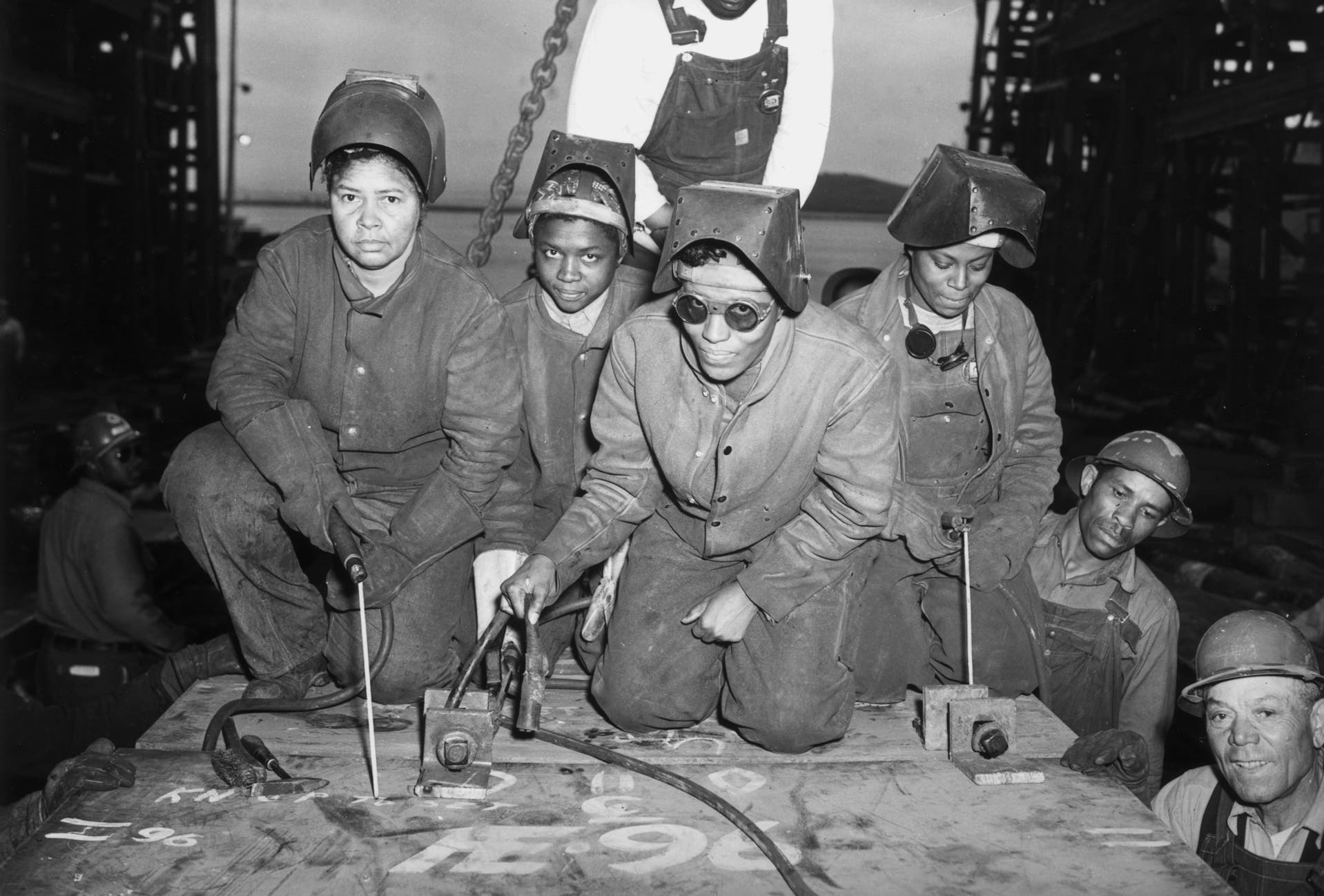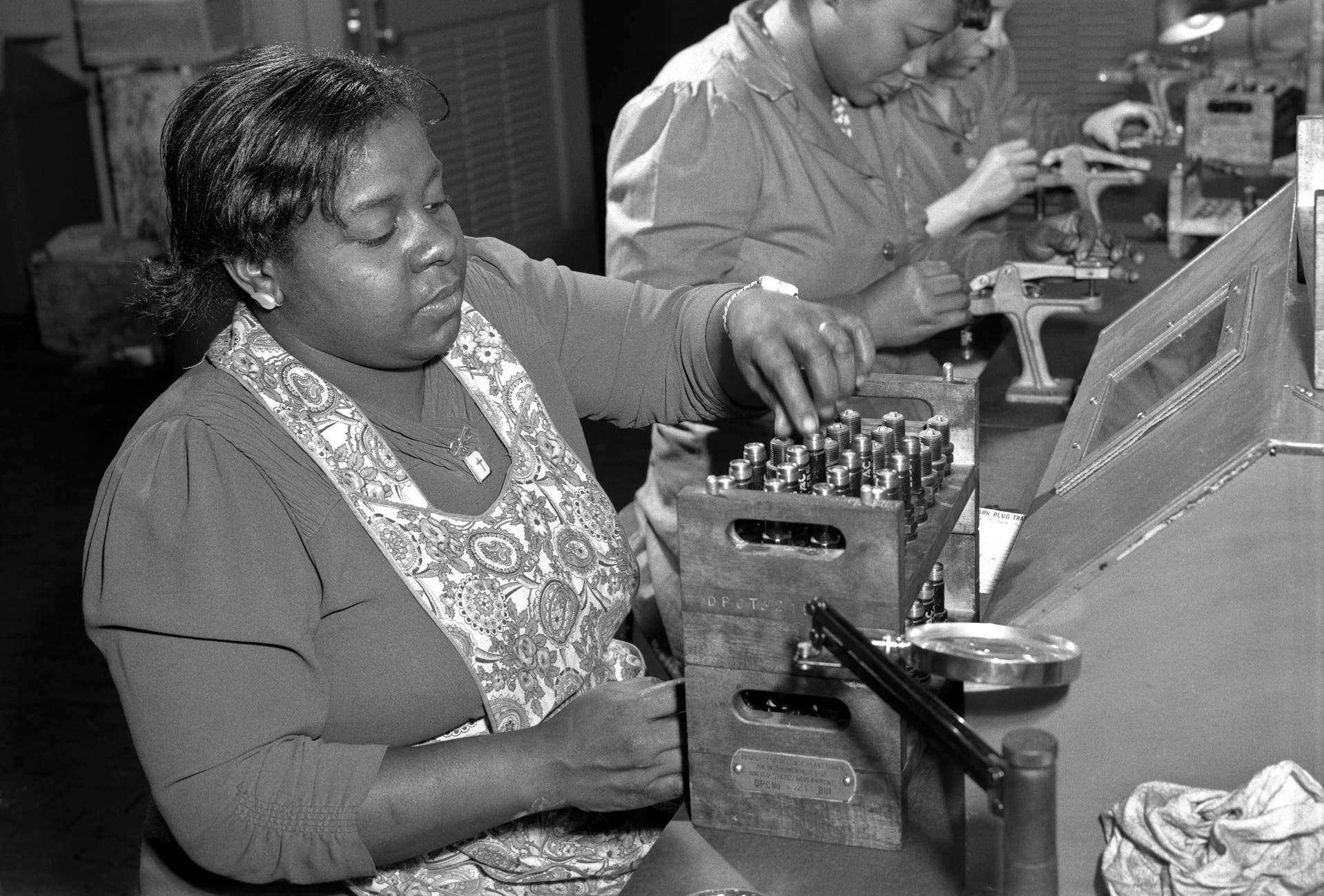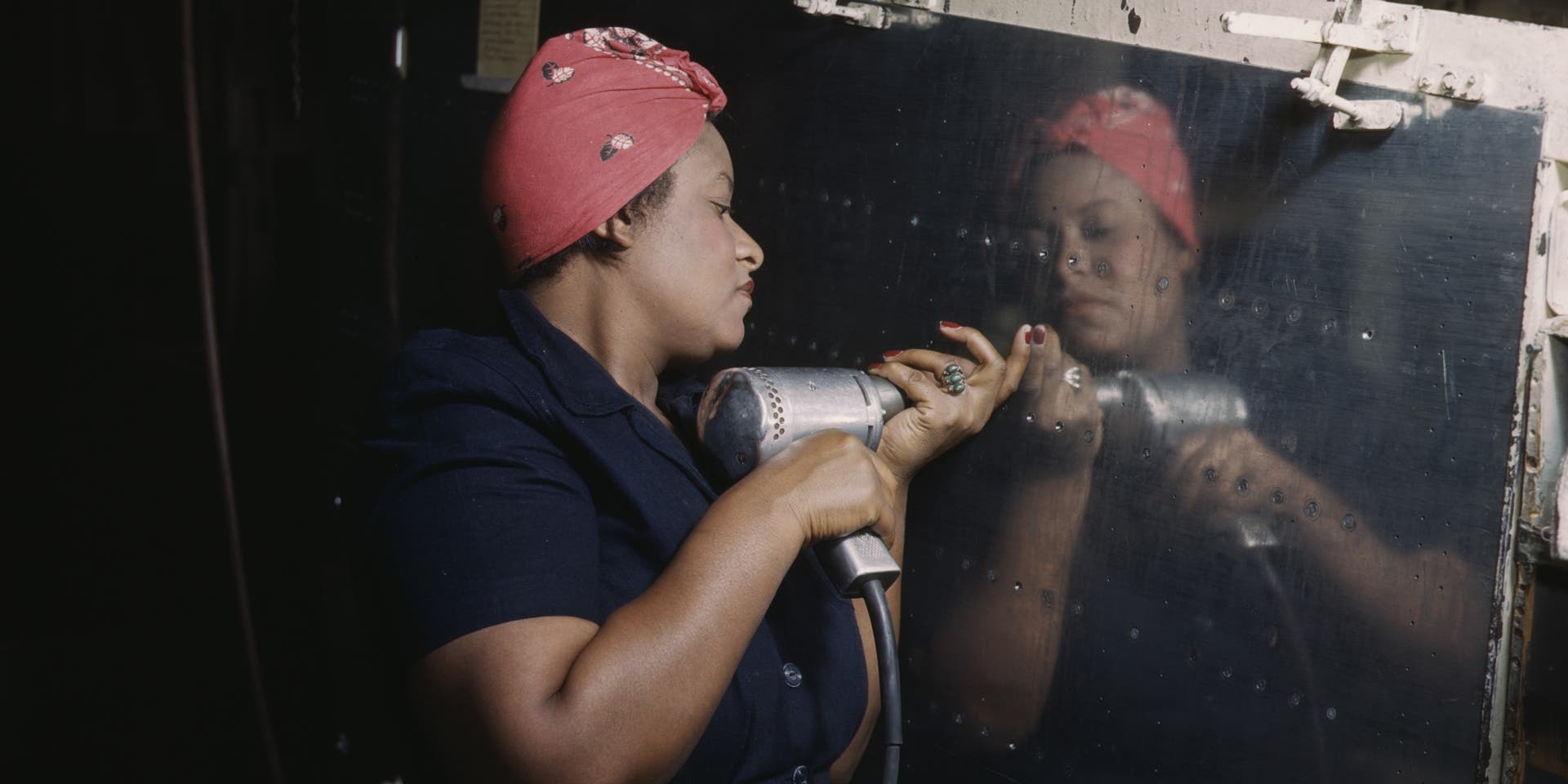The Forgotten Black Rosies: African American Women’s Crucial Role On The WWII Homefront

World War II is often remembered as a time of heroic sacrifice, both on the battlefield and on the homefront. Much of the focus has been on the famous “Rosie the Riveter,” the women who took on industrial jobs to support the war effort.
However, it mainly reflects the experiences of white women, while the contributions of African American women have been overshadowed or ignored in much of mainstream history.
These “Black Rosies” fought not only to support the war effort but also to challenge racial and gender barriers that limited their opportunities. Their story is one of resilience, empowerment, and dedication, both to their country and to their fight for equality.
Let’s delve into the untold history of these remarkable women whose contributions are finally getting the recognition they deserve.
How WWII Opened Doors for Black Women
The outbreak of World War II saw millions of men go to war, leaving factories, shipyards, and offices short of workers.
For black women, however, entering these industries was not as straightforward as it was for their white counterparts. They faced racism and sexism, and breaking into these jobs meant a tough battle.

Leaders like Mary McLeod Bethune and A. Philip Randolph took action, urging President Franklin Roosevelt to step in. In 1941, Roosevelt signed Executive Order 8802, which stopped racial discrimination in defense jobs.
This gave a huge boost to Black women. More than 600,000 of them traded their roles as domestics and sharecroppers for better-paying positions.
Gregory S. Cooke, director of the documentary Invisible Warriors, stated, “The war gave Black women a new motivation to leave behind their demeaning jobs and embrace opportunities they had never imagined.”
Contributions of Black Rosies on the Homefront

Louise Williams, [France?], Velma Glass Johnson, Florence Thomas, Katie Jeffries, Althea Skelton, Ellamae, Mary Johnson
Once they secured their positions, Black Rosies made significant contributions across various industries. They worked as welders, electricians, and sheet metal workers in shipyards, assembly lines, and factories.
Ruth Wilson, a 98-year-old Black Rosie, recalls her time as a sheet metal worker in the Philadelphia Navy Yard: “It made me feel good because my husband was over there fighting, and here I was doing my part. Plus, I made more money!”

Black Rosies didn’t just work in factories and shipyards; they also stepped into roles in administrative offices, worked as computer scientists, and even helped on farms, growing the cotton needed for soldiers’ bed linens.
Their contributions were crucial to keeping the war effort going, and the pride they took in their work is still clear today, even decades later.
The Struggles of Black Rosies

Yet, Black Rosies encountered harsh racism and sexism at home. Both Black and white women earned 10 to 15 cents less per hour than men, even with equal pay regulations in place. Black workers also faced fewer benefits and were excluded from union leadership.
The shipbuilders’ union blocked Black membership entirely. At Wagner Electric in St. Louis, where the workforce was 64 percent white women and 24 percent Black men, not a Black woman was hired.
“These struggles were part of the Double V campaign,” explained Dr. Honey, referring to the World War II slogan representing the fight for victory abroad and equality at home.

Willie Mae Govan, one of only three Black women making gunpowder at E.I. DuPont in Alabama, recounted the sexual harassment she endured from white male supervisors and the constant stress that led to severe migraines.
Bernice Bowman, a clerk typist at the U.S. General Accounting Office, shared how, despite frequent promotions for her white colleagues, she never received an opportunity to advance.
“The thing is, Black people, we were used to discrimination,” said Mrs. Wilson. “So we just did our best to ignore it and kept pushing on.”
A Long Overdue Acknowledgment

In 1945, when the war ended, researcher Kathryn Blood wrote a report that emphasized the crucial part Black women played during the conflict. Despite this, their efforts remained largely overlooked for years.
Only in the 21st century did historians, filmmakers, and activists start bringing attention to their significant contributions. “These women, I truly believe, are some of the most significant women of the 20th century,” Gregory Cooke remarked.
As more stories of the Black Rosies come to light, individuals like Ruth Wilson are finally getting the recognition long overdue.
“At the time, we didn’t really think about it as wanting recognition,” Wilson said. “But now it does feel nice to know that the work we did is being remembered.”

